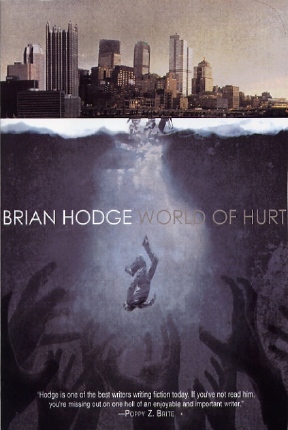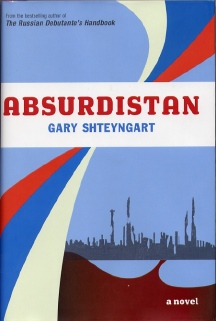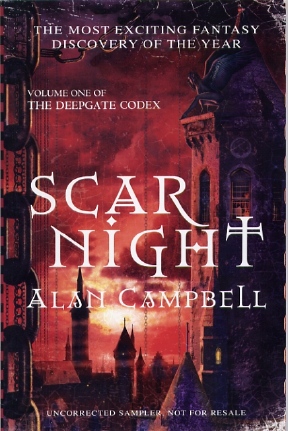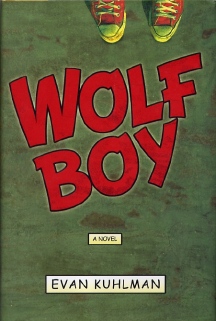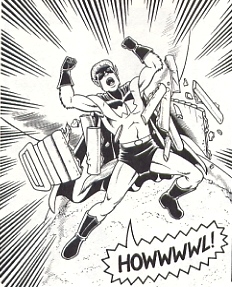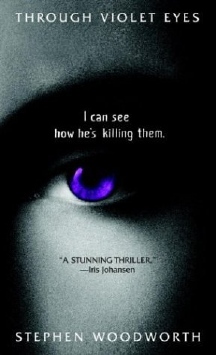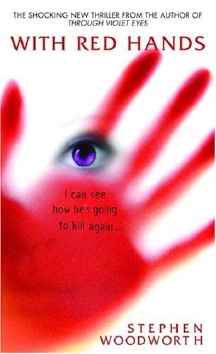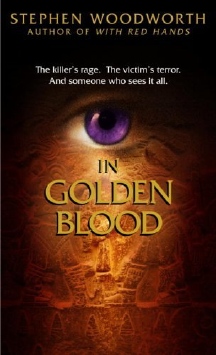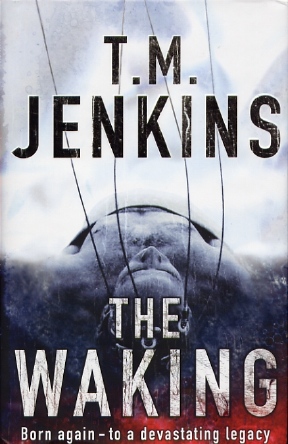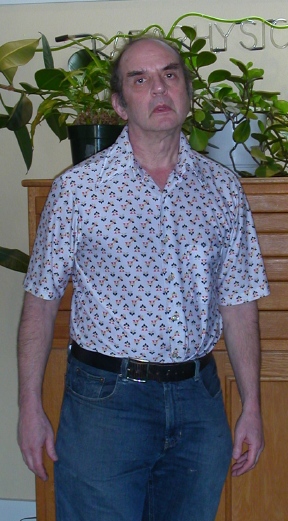|
|
|
This Just In...News from the Agony Column
|
05-05-06: Brian Hodge is in a 'World of Hurt' |
|||
Demon
est Deus inversus.
Let's flash back fifteen years to 1991. I'd just moved from Southern California to Northern California, from the pits of urban hell to an idyllic small town stuck between a National Forest and a protected bay. That move involved a few books; the stacks were still a twinkle in my wallet's eye. Abyss Books, one of the best imprints ever to grace the world of mass-market paperbacks was going strong. Their latest release, 'Nightlife' by one Brian Hodge, was an outstanding effort by a writer I was familiar with from the pages of The Horror Show. The blurb section of 'Nightlife' features a selection of you-must-remember-this names, including some who now have, sadly, passed away. William Relling, Jr., for example is cited as author of 'The Infinite Man', though that book never managed to be actually published by Scream/Press. I still have my World Fantasy Convention ARC of Relling's unpublished collection. Alas, he is here no more to grace us with his fine work. But back then, as the author of two non-Abyss novels, he was flying high with Hodge, Koja, and Melanie Tem. 'Nightlife' was a pulse-pounding thriller about a South American drug that gets loose in Tampa back in the days when the club scene was no-less hopping than it is now, but most assuredly hopping to a different bear. Skullflush is a sort of cocaine that transforms your body as well as your mind, and for me 'Nightlife' was a real winner because it offered the readers monsters, actually flesh-and-blood horrors. Looking at Hodge's novel really takes me back to that time as a reader. The Abyss books occupy a row of honor in the stacks, all them collected and carefully filed. That's why I was able to find 'Nightlife' so easily when 'World of Hurt' (Earthling Books ; July 2006 ; $40) arrived earlier in the week. Hodge's work has aged well, and Hodge himself is still burning, even more brightly than before. 'World of Hurt' begins as Andrei makes an online confession and describes how he died. Hodge is that kind of writer. Andrei is that kind of guy, the kind who sees through life as if it were a piece of bruised fruit, the skin purplish but translucent. It helps that he had in fact died, and stayed that way for 38 minutes. Such an event might tend to make the life that follows bland. But Andrei didn't get the typical tunnel-of-light, comforting relatives sort of Near Death Experience. No, Andrei got the glimpse-of-Heaven model, and as it turns out, well, if a smile is just a frown turned upside-down then Heaven is...unbearable, at least by the living. And perhaps just as persistent and inimical to life itself as Hell. Andrei finds that life after death, actual life after actual death, is not much easier than death itself. Death follows one, and there's nothing in the rulebook that says the beings of Heaven are forbidden from using all the tools that hell avails itself of. Hodge has purified himself in the intervening years. 'World of Hurt' is leaner and much more intense than 'Nightlife', which is saying something. Hodge manages to combine fragility and sheer terror, to erect tender emotions and then rend them from the flesh of his characters. At 148 pages, 'World of Hurt' lives in the space between novella and novel, depending on the precise number of words and whose definition you're looking at. The DJ and interior art by Robert Sammelin is sparse, evocative and lean. The introduction by Brian Keene, is well... on the profane side of sacred and profane. At $40, 'World of Hurt' is not cheap, but it's not painfully expensive. It's Brian Hodge, peeling away the skin of the world. There is a war within us, and it will exact a toll that we're probably not prepared to pay. We humans have exerted quite an effort imagining Hell and its denizens, but it might behoove us to look at the flip side of Perdition. After all, Heaven is by definition every bit as dead as Hell. |
|
05-03-06: Evan Kuhlman Unmasks 'Wolf Boy' |
||||||
Novel & Graphic
Novel
Kuhlman starts off his novel-and-graphic-novel hybrid with a snow shovel upside the head of the reader. You meet the Harrelson family -- father Gene, mother Helen, daughter Crispy, and youngest son Stephen -- on the day the eldest son, Francis dies in a car wreck. The Harrelson's are an average family. They’re like the people I used to hang out with when my boys were in Cub Scouts. And no matter how together you are, how complete, how mild-of-manner and even-of-keel you may be, the loss of a family member, a child, a brother, well, it wrecks you. Pretty much just wrecks you, and for the rest of your life, like it or not, you define yourself both by the loss and your ability to live on afterwards. Many, perhaps most don’t make it, and everyone develops their own strategy. For Stephen, that strategy involves the creation of Wolf Boy. No, not the novel you read, but the graphic novel within the novel. And thus are hybrids born, of pain and need and in Kuhlman's case, talent and imagination. Kuhlman underplays everything in 'Wolf Boy'. His writing is whisper quiet and his family is not kooky or overly weird. They're just those folks over there, trying to deal with that. That thing you don’t want to even talk about because it is so huge and so important and so utterly, totally invisible. Lots of novels render grief visible. Kuhlman has the panache to render it literally visible.
Kuhlman's background is in small literary journals, stuff that I've actually read -- Glimmer Train, Salt Hill, Third Coast, and Madison Review. For this reader, it's quite gratifying to see writers move through the ranks like this. It’s the way things are supposed to happen, but usually, alas they do not happen this way. When it does we should be especially attentive -- and attentive translates to "part with our money," not "nod in the general direction." Publishers have an amazing ability to ignore pretty much very damn thing in the universe except The Bottom Line. That said, the Shaye Areheart Books imprint is doing some pretty impressive stuff. They have a unique vibe that is slightly weird and slightly sweet. It goes a bit against the grain, and that's for the better. If Shaye Areheart is on the case, one is well advised to give it a look. Frankly, the graphic novel aspect of this story is strong enough that I wish there were more of it, no matter how contrary that opinion might seem to what I'd expect myself to say. And Kuhlman's method of getting the two together requires some extraordinary fictional circumstances. As difficult as it was the first time for him to pull this off, I'd say it will be exponentially more difficult the second time around. But Kuhlman also exceeded my expectations with the reality of his novel, the centeredness and density of his writing. Obviously, like pretty much everything I write about this is not a book for every person in the universe. But I'd suggest that it is definitely worth seeking out in person. Lay your hands upon the book, that it might do the same for you. |
|
05-02-06: Stephen Woodworth Sees 'Though Violet Eyes' |
|||||||||
| No
Contacts Required by Terry Weyna
Natalie Lindstrom is a Violet, one of a very few humans born with violet eyes, a characteristic that brings with it an ability to speak directly with the dead and to have the dead speak and act directly through them. The existence of Violets, never explained, allows for the painting of Picassos and Monets through the hands of the living (imagine having Picasso in your head, controlling your hands, creating new masterpieces through your fingers); the study of history by receiving the testimony of those who created it; and, most importantly, by allowing murder victims to testify at the trials of their murderers. Despite her preference to work with artists, Natalie has been assigned by the North American Afterlife Communications Corps – the NAACC – to work in law enforcement. As 'Through Violet Eyes' opens, she has been assigned to work with the FBI in tracking down a serial murderer who is targeting Violets themselves. She knows about the assignment before FBI agent Dan Atwater approaches her, because the dead Violets have already been talking to her about the masked individual who killed them.
Woodworth's sequel, 'With Red Hands', is even more hair-raising. It begins four years after the events of 'Through Violet Eyes'. Natalie has quit the NAACC to raise Callie, the daughter she and Dan created, who has inherited her Violet eyes from her mother. The NAACC isn't taking her retirement lying down, however, and neither is it pleased that Natalie refuses to enroll Callie at the NAACC's school, a place of childhood horrors from which Natalie has never herself recovered. The NAACC has blackballed Natalie from almost any sort of work, including those occupations that would not require her to use her Violet talents at all, to force her back into the fold. But Natalie scrounges a living with private clients who want a final word with a parent or a husband – contacts that rarely work out as well as the clients would like them to – and resists the frequent blandishments of the school and ignores the spies who keep watch on her 24 hours a day. 'With Red Hands' explores what happens when a Violet goes bad. Even though judges are careful to instruct juries that the testimony of a victim is not to be accorded any greater weight than that of any other witness, what juror can ignore the actual presence in the courtroom of the victim testifying to the circumstances of his or her own death? If a defendant can obtain false testimony from a corrupt Violet cooperating with an evil dead soul so as to fool the SoulScan that testifies to a Violet's possession, that defendant has a possibility approaching 100% of going free.
Natalie's adventures continue four years later in 'In Golden Blood'. Natalie's estrangement from the NAACC has grown even more bitter, and the NAACC's attempts to keep Natalie from making a living of any sort has made her desperate. When she gets an extraordinarily lucrative and very secretive offer to delve into the history of Peru to uncover a treasure trove hidden away for the ages by the conquistador Pizarro, she takes it despite her misgivings. Woodworth has obviously researched his subject matter extensively, and Natalie's trials and tribulations in communing with Pizarro in the far reaches of the Andes Mountains provide the close reader with a history lesson as well as an excellent thriller. The teaser for 'From Black Rooms' contained at the end of 'In Golden Blood' suggests that it will be at least as enjoyable as the first three books in this entertaining series. I look forward to reading it – and anything else Stephen Woodworth might have to offer up in coming years. |
|
05-01-06: T. M. Jenkins' Alarm Call to 'The Waking'; A 2006 Conversation With Harvey Pekar |
|||
Reading Is Brain Surgery
The mysteries surrounding 'The Waking' by T. M. Jenkins (Pan McMillan ; May 5, 2006 ; £12.99) extend beyond those of the labyrinthine plot. But that plot itself is enough to catch my eye. Interestingly enough, it's being sold as a straightforward thriller, even though much of the novel takes place far enough in the future for some folks to have assumed that we've gone through the Singularity and come out the other end into a portion of human history that is simply unimaginable. Well, Jenkins has imagined something out there, and to my mind it sounds pretty damn entertaining and potentially quite intriguing. But let me eschew intrigue myself, and spill the beans on what I know. 'The Waking' begins with the end. The end, that is of Dr. Nate Sheehan. He's murdered in an LA parking lot in the year 2006. Sure, nothing unusual there. Happens all too often. Sheehan is a doctor, though, and so is his wife, and they’ve got bucks deluxe and perhaps they’ve got a bit kooky. You know, ol' Walt and L. Ron, with their frozen heads under Disneyland, waiting for the, well, 'Rapture of the Nerds', or at least, good'nuf high-tech to bring 'em on back. So both Doctors Sheehan are on this cutting edge today, an edge that's quite a bit sharper than it was back when Walt kicked the bucket. Nate's wife does something that's apparently conscionable to her. Maybe not so much for the rest of us. Cut to (this is LA, baby, you always cut to your next scene) LA 2037. The rich are still rich and managing to be even crazier than they were back then, which is now. Got that? An eleven year-old boy is going to visit someone, something. Cut to (oh, baby, baby) California, 2069. A little place called Gamma Gulch Prison. Duane Williams, he's 26, and he's a bad man. Seems the future isn’t going to rid us of them. A rapist, a murderer, and next in line for California's famous Sparky ride. Some sixty-something years on and we're still not listening to you Euros vis a vis the death penalty. Not. Listening. Got that? Cut to Arizona, 2070. Bad music, bad hair, second century. Some things never change, and good ol' Air-oh-zone-uh is still California's dumping ground for the real science nuts. In this case, the folks who are bringing Nate back from the grave. Lucky Nate, eh? Kicks it in the midst of what seems like a hellish year, that's 2006. World not just going, already down the toilet. Sixy-plus years later? Turns out that's a deep damn toilet, and there was further down to go. Much further. And leave all this aside, cause that toilet's only the background. Nate still has his own murder to solve, as well as some body image issues. And journos are still journos, all nose and little journalism. Talk about waking up on the wrong side of the bed! Ol' Nate has opened his eyes on the wrong side of the century. And you know all those warnings we're getting at the moment about global warming? Well, turns out that they were right and in 2070, well, we're in the thick of it. T. M. Jenkins had concocted an air-tight page-turner with a pretty heavy science fiction backdrop. Fortunately, he's the kind of journalist who spends time at conferences about the brain, and hangs out with neuroscientists. For those of us who were stoked to discover Richard Morgan's 'Altered Carbon' back in the day, this book looks very familiar. But the similarities don’t end in the near-future setting. Both books were written by Brits, yet set in California. Both have a sort-of "high-concept" driving them, you know, those Hollywood-friendly ideas that you pop off in a few words. And both were first published as British hardcovers with no American publisher in sight. What the heck is going on with that? I mean, Jenkins now lives in Hollowood. It's not like he's hard for USAian publishers to find. In fact, they'd probably have to cross the street to avoid the guy, and I'm telling you from experience that crossing Sunset is no picnic. So the second mystery associated with this book is how it reached UK hardcover and not US hardcover. If HarperCollins published 'State of Fear', then we have nothing but 'State of Fear' itself to fear. Where are the fearless folks who will turn 'The Waking' into piles of paperbacks on the grocery store racks? Presumably, they're not hiding from global warming. Well, the USAian ability to avoid great writers notwithstanding, at least we have Our Friends 'Cross The Pond to handle things for us, and bring us something to keep our knuckles nice and pale, something to keep the television switched off. And while it involves brain surgery, 'The Waking' clearly requires no knowledge of brain surgery to enjoy. Though, as with any book, in the act of reading it you'll be performing a sort of brain surgery on yourself. Now there's a way NOT to sell books. "Buy this book and slice your brain up." Of course, there are those to whom this would be a good thing, and alas, I must count myself among them. Reading as self-inflicted brain surgery? Sign me up -- and send me the manual. I could easily start my career in self-taught brain surgery with 'The Waking'. |
|||
"What I Write About is Real"
I frankly thought I might not have a particularly long discussion with this writer, because he's been at this for over thirty years, and I've only just twigged to his writing last year when Random House sent me a copy of 'American Splendor: Our Movie Year'. I really flipped for that, because I live in such a quotidian world myself, shopping, cooking, cleaning, and writing, writing, writing, reading, reading, reading, reading, reading... Well, my fears for a truncated conversation were completely misplaced. In fact, I had to sort of wind things up pretty fast when the gent who was following me showed up. I was helped by the fact that I'd just read both 'Ego & Hubris : The Michael Malice Story' and 'The Quitter'. I could probably have spoken with Pekar for another hour, but it's just as well I didn't. When we got out I found I had well over an hour of tape, er files. At any rate, the conversation is here in two parts. You can download Part One in MP3 or RealAudio and Part Two in MP3 or RealAudio. If you’re subscribed to the podcast, you've already got both parts. Pekar is one of the great and deep American writers and American spirits. I'm honored to have spoken to him. I know you'll enjoy hearing him speak. Did I mention that he writes auto-biographical NON-fiction? I just want to be clear on that, because it's something I really know. Now. Better late than never. |
